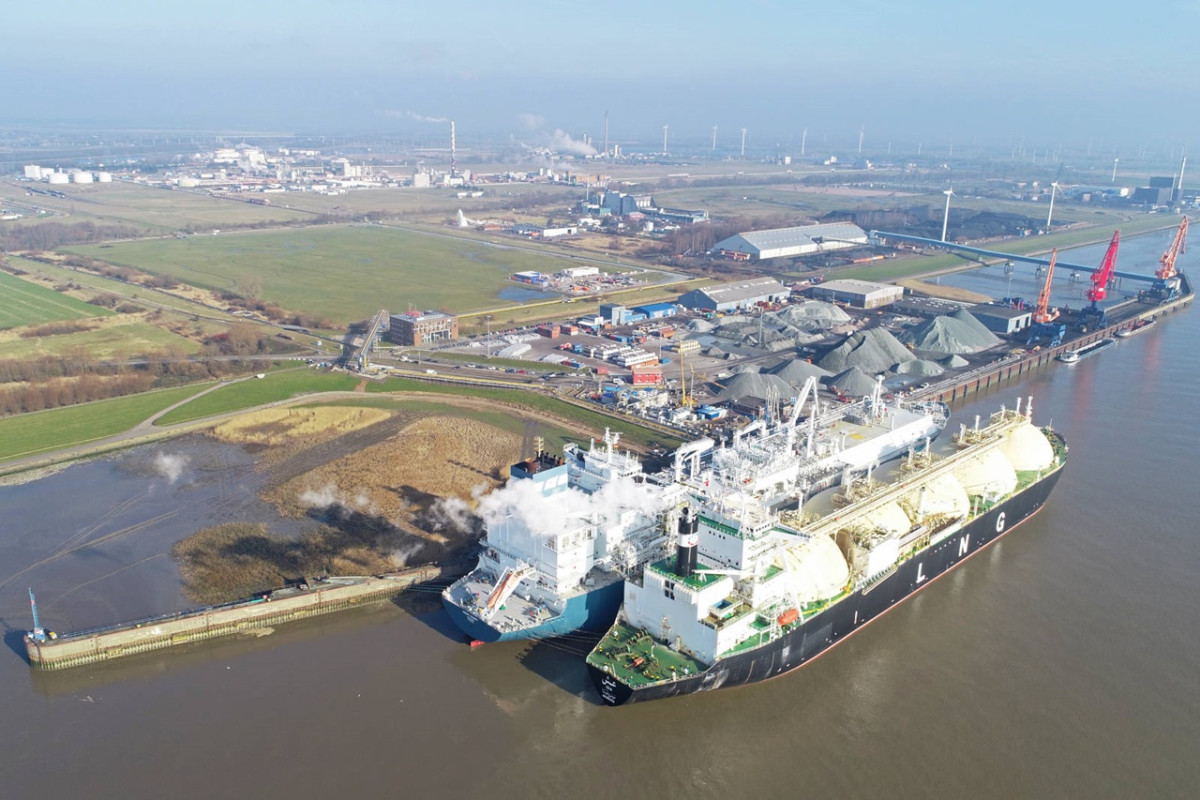German government plans extensive LNG infrastructure build-up to ensure security of European supply
Germany’s government sees a need for significant overcapacity of imports of liquefied natural gas (LNG) to ensure the region’s supply in case of accidents or sabotage to some of its infrastructure such as pipelines from Norway, says a report by the economy ministry. The government says that Russia’s war against Ukraine has “changed the parameters of energy security structure” and in the future German energy infrastructure has to be more robust and resilient with European solidarity in mind.
“Russia's attack on Ukraine has made us realise how dangerous unilateral dependencies are and that they cost us,” said economy minister Robert Habeck. “We would be fools not to learn from this.” Thus, the government aimed to make Germany “more robust”, for example through renewables expansion and efficiency, but also with the help of the LNG import infrastructure.
“Just as other European countries supply Germany with their infrastructure, Germany must also be able to supply its neighbours,” said the report, which had been requested by the budget committee of the Bundestag (parliament). The government said it assumes additional supply needs from the Czech Republic, Slovakia and Austria as well as Ukraine and Moldova.
The German government does not even address the questions raised about the climate impact of the LNG projects. Instead, it justifies its fossil fuel plans with all kinds of hypothetical horrifying scenarios.
With several floating import terminals and three fixed onshore ports, Germany could have a “safety buffer” of about 30 billion cubic metres (bcm) per year LNG import capacity from 2027, says the report.
“The view of the German government is that a safety buffer of this size is necessary to continue to guarantee supply security with regard to the possible loss of import capacities due to accidents, sabotage or other external events,” writes the economy ministry. It explains that this buffer should be understood as a hedge against the loss of Norwegian imports – Germany’s most important supplier since Russian deliveries were halted – and also to secure the supply for neighbouring European countries.
While the government emphasises that – despite the safety buffer – “all efforts are and must be directed at reducing fossil fuel consumption for climate action reasons,” critics say LNG plans go beyond what is needed for supply security and threaten climate targets.
Sascha Müller-Kranner, head of environmental NGO DUH criticised LNG plans as “oversized” and unnecessary for supply security. “The German government does not even address the questions raised about the climate impact of the LNG projects. Instead, it justifies its fossil fuel plans with all kinds of hypothetical horrifying scenarios,” he said in a press release. DUH called on economy minister Habeck to “bring the plans in line with climate targets” and warns of a “fossil lock-in”.
The government says in the report that it does not see a lock-in effect for higher CO2 emissions with the build-up of LNG infrastructure, and that it will ensure that the fixed onshore terminals will be able to import green hydrogen and its derivatives in the future.
The war in Ukraine has pushed efforts to diversify Germany’s gas supply away from Russian deliveries to the top of the government’s agenda. As part of these efforts, the government is going full steam ahead on the build-up of the country’s own import infrastructure for liquefied natural gas (LNG). It is investing in permanent land-based import terminals, while leasing floating units in the short term – the first of which was inaugurated in December 2022. Germany has a well-developed natural gas pipeline grid and is connected to terminals in neighbouring countries, but until recently did not have its own port to receive LNG directly.
Key question: How fast will gas demand decline?
The role of gas during Germany’s energy transition has been a contentious issue for years. The German government has seen natural gas as a bridging fuel that can replace dirtier coal to bring down CO2 emissions quickly, and serve as an energy source when there is too little wind or sun. However, it is still a climate-damaging fossil fuel and will have to be phased out eventually to help Germany become climate neutral by 2045. As the country is exiting nuclear power next month and only has a small share of hydro and geothermal energy, its future bet is on green hydrogen – made from renewable electricity – to complement wind and solar power.
However, Russia’s war against Ukraine and the energy crisis have put the government’s plans for fossil gas into question – which suddenly is no longer cheap and in abundance. With the halt of Russian deliveries, Germany saw unprecedented cuts in gas demand in 2022 and raced to build up its own import infrastructure for LNG in record time to be able to supply its industry, as well as households for heating. Chancellor Olaf Scholz has said he wants the country to use this “new Germany-speed” for the expansion of renewable energy. The government has emphasised time and again that Putin’s war has proven to be an accelerator for the transition away from damaging fuels like natural gas and towards climate neutrality.
However, gas still has a role to play. Energy industry association BDEW head Kerstin Andreae said last year that the natural gas bridge had not collapsed. “It may have become shorter, and we may have to cross it faster,” she said at the time. Consultancy McKinsey has said that fossil gas will be a crucial part of Germany’s power and energy supply for at least another ten years, because the expansion of renewable energy and the electricity grid are lagging behind.
In today’s report, the economy ministry used a scenario which assumed a relatively high future gas demand from a project on long term scenarios for Germany to become climate-neutral by 2045 it had previously commissioned. It argued that this was necessary to calculate the safety buffer. However, actual demand must go down faster to keep in line with climate targets, says NGO DUH.
It is difficult to predict future demand, but even in the most conservative scenario, the International Energy Agency (IEA) projects a significant decline in the EU’s gas demand in its World Energy Outlook 2022.
The projections for future gas demand in Germany will hugely impact plans to build out some and dismantle other gas infrastructure projects in the coming years, not just for LNG imports. While there are plans for new and refitted hydrogen pipeline networks, experts say that the country will no longer need the entirety of its existing huge transmission and distribution gas grid. State secretary Patrick Graichen – former head of energy transition think tank Agora Energiewende – has reportedly told local utilities to start planning the process of dismantling their infrastructure. Gas grid operators are currently working on plans to develop the transmission grid by 2032, so government estimates for gas consumption like from today’s report could also have implications for those plans.
Government plans significantly oversized?
Journalist Malte Kreutzfeldt highlighted in a series of messages on Twitter that the economy ministry report was calculated with more than just one safety buffer. The ministry used the most conservative scenario regarding future gas demand and calculateed with a relatively high volume of 74.1 bcm in 2030 (82 bcm in 2022 and 99 bcm in 2021); it adds another ten percent to the projected demand as a “risk premium”; it assumes gas demand in neighbouring countries remains unchanged despite climate targets; it underestimates the capacity of several of the floating terminals; and it assumes the floating terminals are used much less than the charter periods, thus explaining the need for fixed onshore ports.
Greater diversification through additional floating terminals can further reduce the risks to sufficient supply, said Jakob Wachsmuth, researcher at Fraunhofer Institute for Systems and Innovation Research (ISI). However, there should be early exit perspectives because gas demand is expected to decline in the coming years due to climate protection efforts, he added. “As a result, the construction of fixed terminals, which will only be available later and may be operated for longer, should be severely limited.”
Others follow the government’s arguments. When planning LNG infrastructure, the government had to keep in mind “Germany's role as a natural gas hub in Europe,” said Dieter Franke, head of energy resources at the Federal Institute for Geosciences and Natural Resources (BGR). “A considerable share of the gas imported by Germany has been passed on to neighbouring European countries in recent years,” said Franke. “Landlocked countries - such as the Czech Republic or Austria - cannot import LNG themselves and are dependent on European solidarity in the event of limited pipeline supply.”


